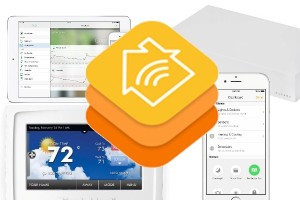The relationship between the Internet of Things (IoT) and the places it connects can be complex–as the individual devices (and device families) proliferate, they should also become easier to connect and potentially relocate.
This article is the introduction to a continuing series that will discuss the IoT for those who do not want (or are not able) to make an investment in installed connected devices. Rental apartments, historical properties, or simply those who are first investigating the potential of the Internet of Things in their unique situation–all perfect examples of IoT that are not destined to be permanently installed. For example, an urban apartment dweller who rents their home (like me) will most likely not spend thousands of dollars to attach connected automated window shades despite their desire.
- Backbone: hubs — right in this very article, keep reading.
- Lifestyle: lights, HVAC
- Security: locks, cameras, smoke detectors
- Entertainment: audio and video
- and more…
The Backbone of Your Own IoT — the Hub
New users to the Internet of Things often start with a single type of device (lights, thermostats, door locks, etc.) that can be controlled from mobile devices. Some, like a deadbolt lock, connect directly via a wireless internet connection and mobile devices to allow for remote control or monitoring. Others, like a lighting system, might require a physical device that will link the individual pieces together as a system (i.e. “turn the living room lights on,” rather than “turn on bulb 1 and bulb 2 and bulb 6 and bulb 10”).

With current technology however, if a network has more than one device type, the location requires a consumer-ready IoT “hub” to allow interoperability and automation (i.e. if the lock on the door has been opened, then turn on the lights). And yes, that means that sometimes a smart place needs multiple hubs, one master and as many secondary units as the different devices require. Several hubs on the market today have large collections of compatible devices; over the next few weeks we will be considering the SmartThings system from Samsung, the Staples Connect hub (built by D-Link), the Lowe’s Iris system, and the Nexia Bridge in the development of this series.
 In the future, a single language (like Apple’s HomeKit or Google’s Thread) may link all the connected devices on a network (refer to our article 2016 Predictions for the Internet of Things, where we propose “One System to Rule It All”).
In the future, a single language (like Apple’s HomeKit or Google’s Thread) may link all the connected devices on a network (refer to our article 2016 Predictions for the Internet of Things, where we propose “One System to Rule It All”).
Even now, with the Internet of Things still in it’s infancy, some devices are beginning to be both a hub and an IoT device unto itself (consider the Nest Learning Thermostat, the Logitech Harmony remote control, and the Amazon Echo in this category).